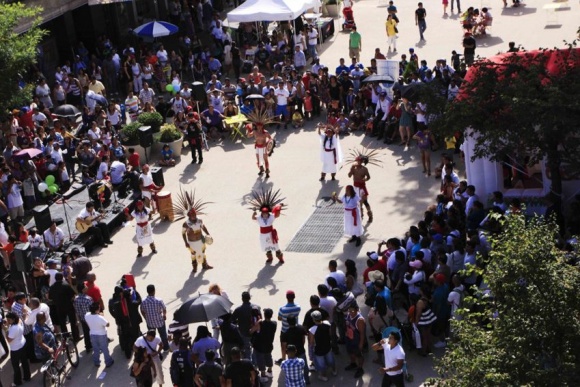Land Acknowledgement
I acknowledge that the land here in Indianapolis, IN that I inhabit and gather on is the traditional land of Indigenous peoples including the Potawatomi, Piankashaw, Wea, Kaskaskia, Kickapoo, Miami, Delaware, and Shawnee. I pay respects to their elders past and present. I honor with gratitude the land itself and the Indigenous peoples past and present who have stewarded it throughout the generations. I acknowledge the legacies of forced removal and violence from this land and am committed to treating this land with respect as it is not ours.

https://www.thehindu.com/thread/arts-culture-society/as-theatres-go-dark-will-the-show-go-on/article31626276.ece
Engaging with Communities as We Rebuild Post-Pandemic
Arts organizations are beginning to see the light at the end of this year-long tunnel and are looking towards reopening. And while many of us artists are dying for the day we can sit in a dark theatre once again, we are the minority of audience members. How do we get the mainstream, semi-regular theatre attenders back in the audience? How do we compete with virtual experiences and technology, and how do we get them to engage with our organization specifically? And ultimately, how do we stay relevant without pandering to trends?
The answers may lie in mindful community engagement with local communities. Community engagement is not a marketing or audience-building technique, but an exercise in building mutually beneficial relationships, starting with asking what your organization can do to serve the community and meet unique needs that they may have. It allows a bond of relevance to be developed, built on humility to recognize that your organization needs the community to thrive, and that only they know exactly what they need. Nina Simon summarizes this balance of relevance by saying “At its heart, building relevance is about living in the creative tension between evangelizing the things you care about and listening with interest to what others care about. It’s about radiating the inside out, and inviting the outside in.” 1 Most arts organizations fundamentally believe that the arts are of value to most or all people, yet very few seriously work to connect as many people as possible with art.
If organizations treat community engagement as just a siloed department instead of central to their mission and production of all theatre, they won’t be able to maintain audiences. Countless organizations classify some of their work as engagement, however the “institutionally-articulated ‘needs’ of audiences often look suspiciously like the ‘wants’ of the professionals speaking. Professionals want silence in the auditorium, so they say ‘people need respite from their busy lives.’ Priests want parishioners to accept the canon as presented, so they say ‘people need strong spiritual guidance’.”2
Organizations have great opportunity to innovate and explore how they can provide help in a sector where theatre and the arts have never been used before. It is through these social experiments that arts organizations become ingrained in a community and seen as invaluable resources, building support for their future. Community engagement programming can break down barriers to theatre by introducing non-traditional formats that eliminate fear, increase participation and build a relationship between constituents and the organization. It helps prompt the “Maybes,” who are unsure of engaging with cultural organizations, to enter the door most relevant to and built for them, consequently exploring new options and opportunities to expand their horizons. 3
The industry is seeing a shifting trend in organizations as they begin to focus on community engagement work, finding it fulfills a fundamental “why” that their organization had been lacking. And, while not at the heart of community engagement work, organizations often saw increased attendance, unconventional marketing platforms and better brand awareness.

Queens Museum of Art Street Festival https://www.livablecities.org/blog/art-space-and-community-engagement
When organizations are trying to rebuild post-pandemic, holding community engagement as central to their mission will distinguish themselves from the countless other entertainment options that people have become so comfortable with in the past year. Building relationships with your surrounding communities and listening to what they want out of an in-person experience will allow organizations to cater to their individual needs and bring them back into the house.
As artists and administrators, we often forget that not everyone is suffering from the loss of live theatre as we are. So, how do we help our communities realize the beauty and world-changing power that a dark theatre at curtain has, and how do we use this power to best support their individual needs, instead of just the trends of the world?
1. Simon, Nina. The Art of Relevance. (Santa Cruz, Calif: Museum 2.0, 2016), Empathetic Evangelists.
2. Simon, Relevance, Wants and Needs.
3. Borwick, Doug. Engage Now!: a Guide to Making the Arts Indispensable. (Winston-Salem, NC: ArtsEngaged, 2015), 213-219.

Mikaela Schmitt
She/Her/Hers
DSF Digital Internship Participant
Butler University
B.S. Theatre Arts Administration, Class of 2022